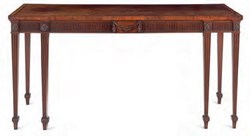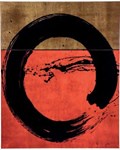
Sèvres beau bleu jewelled porcelain coffee can and saucer c.1782, $17,000 (£13,750) at Hindman.
Image courtesy of Hindman
Chinese export, Delft, Meissen, Spode and Worcester were served up alongside some fine pieces from the Sèvres and Vincennes factories.
One gem that caught bidders’ eye was a rare Sèvres partially beau bleu jewelled porcelain coffee can and saucer, from c.1782 (pictured top). The highly labour-intensive technique of ‘jewelling’ this piece was introduced at Sèvres in c.1779. Drops of enamel were used to imitate precious gems applied onto gold stamped foils. While some of the original red enamel ‘cabochons’ were lacking it did not stop bidders taking the lot up to $17,000 (£13,750) against an estimate of $3000-5000.
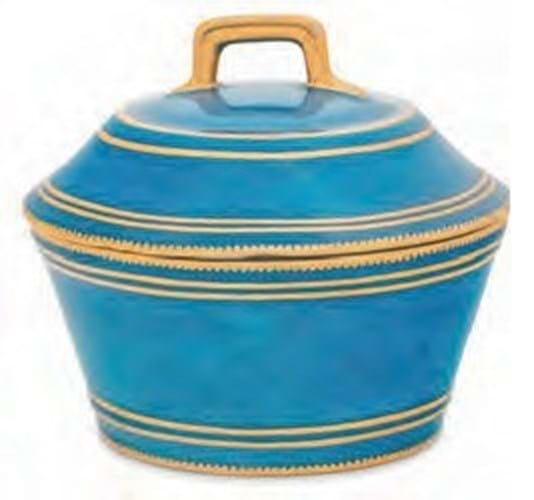
Vincennes bleu céleste plein porcelain sugar bowl and cover c.1754, $15,000 (£12,130) at Hindman.
Image courtesy of Hindman
From the earlier Vincennes period was a rare bleu céleste plein sugar bowl and cover c.1754. It sold for $15,000 (£12,130), nicely above the estimate of $4000-6000. The Sèvres archive has a drawing for this piece dated February 1753. Using the celebrated turquoise ground colour that was first unveiled at the Versailles New Years Day sale in 1753, it would have been one of the most expensive pieces of its kind made at the time.
From a later period, a Sèvres powdered pale blueish grey-ground hexagonal hard-paste porcelain teapot and cover made $15,000 (£12,130). These sometimes-quirky pieces from the Bourbon Restoration are increasingly admired for their inventive forms and colours. Hindman recorded that this teapot with a date code for c.1819-20 was likely to have been gilded by Jean-Louis Moyer (fl.1818-48). The estimate was $5000-7000.
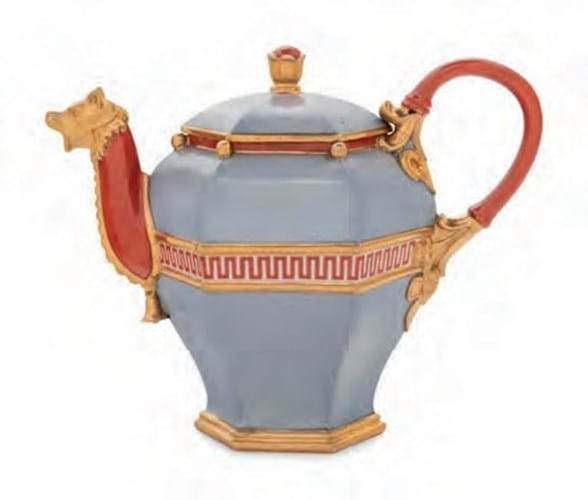
Sèvres hard-paste porcelain teapot and cover c.1819-20, $15,000 (£12,130) at Hindman.
Image courtesy of Hindman
Cartier’s special blend of heritage brand and luxury, continues to be front and centre for collectors.
The Krehbiels owned some fine Cartier pieces including a carved rock crystal, aventurine and moonstone ‘lily of the valley’ flower study from c.1925.
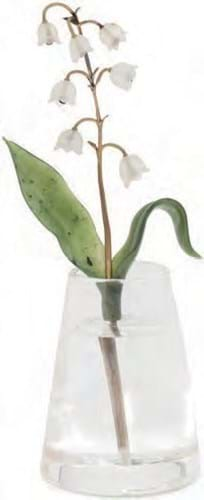
Cartier carved rock crystal, aventurine and moonstone flower study, $50,000 (£40,440) at Hindman.
Image courtesy of Hindman
As Corbin Horn, specialist at Hindman commented: “We believe it to be a close cousin of Fabergé’s famous flower studies of a decade earlier, since Cartier employed many of the artisans who had worked at Fabergé prior to its closure.” A provenance that included the L’Art de Cartier exhibition at the Hermitage in 1992 only added to its desirability as did a very buyable guide of $10,000-15,000. Six phones and several internet bidders contested it to $50,000 (£40,440).
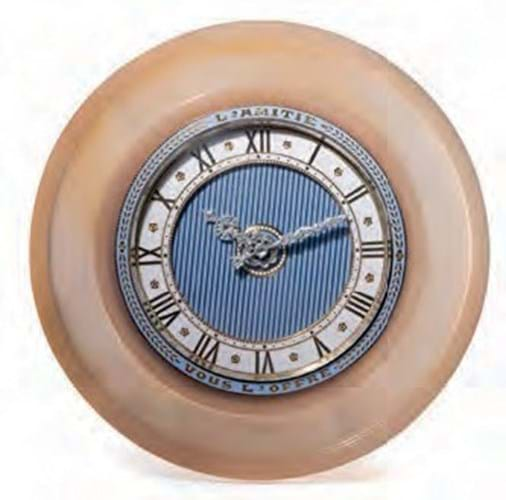
Cartier Belle Époque period yellow gold, diamond, enamel, and agate table clock, $27,500 (£22,240) at Hindman.
Image courtesy of Hindman
Another Krehbiel Cartier piece to do well was a Belle Époque period yellow gold, diamond, enamel, and agate table clock dated to c.1915. The clock chimed in at $27,500 (£22,240), well above the estimate of $6000-8000.

